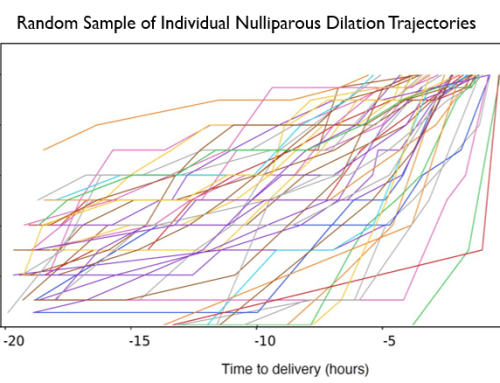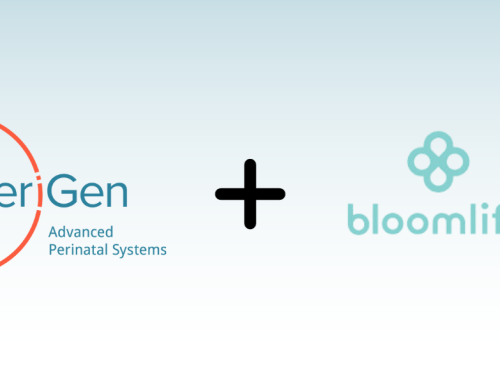Every year, according to a study published by The New England Journal of Medicine in 2011, just over 11% of obstetricians and the hospitals and clinicians serving them, will be faced with malpractice complaints. The average payout will be approximately $360,000 with significant state-by-state variation.¹
PeriGen’s Annual Review of
Labor & Delivery Malpractice Awards
Following is a summary of 2015 perinatal malpractice awards, settlements and complaints:
-
- $8.4 Million Awarded for Hypoxic Ischemic Brain Injury: Mother was admitted to the a Georgia medical center for delivery of a full-term baby. The labor continued throughout the evening. Baby was delivered around noon the next day. Her admitting physician was not present at the delivery, but delivery was overseen by a CNM. For several hours prior to the delivery, fetal heart rate was noted as decelerating and variable. Infant was born severely depressed, with low APGAR scores and metabolic acidosis. He was not intubated for 8 minutes, and he continued to deteriorate, a full code ensued, and resuscitation occurred. Ultimately, infant was diagnosed with a hypoxic ischemic brain injury and developed cerebral palsy. Click for details
-
- A Michigan court granted the right to appeal for a case stemming from a 2008 delivery outcome. Mother was admitted to the hospital with ruptured membranes. She had a lengthy labor – 29 hours – augmented by the drug Pitocin. The baby failed to descend after two hours of pushing. The mother had developed chorioamnionitis (placental infection) and the doctors noticed the presence of meconium. The labor was terminated with a caesarian section. Records revealed “delivery of a healthy baby boy who weighed 9 lbs 13 oz. However, the infant began to show signs of seizing shortly after his birth and a CT scan revealed an acute left middle cerebral artery ischemic stroke, which was “days to hours old.” The complaint alleged that “[t]he baby was at risk for, and did develop, brain injury from traumatic head compression and regional cerebral ischemia caused by failure to descend, macrosomia (large baby), excessive contractions in the presence of failure of descent as augmented with oxytocin, hypoxia-ischemia (regional cerebral and/or systemic) caused by uteroplacental insufficiency and by cord compression and head compression.” The complaint alleged that defendants were negligent in administering oxytocin, in failing to properly respond to fetal heart rate changes, and in failing to perform a timely c-section. Click for details
-
- A couple in Puerto Rico filed a suit for $27 million against two hospitals as a result of respiratory failure, perinatal asphyxia, and clinical sepsis. After experiencing pelvic pressure and secretions the mother was admitted without contractions or amniotic rupture. The mother underwent induced labor. Upon birth, the newborn was found to be in critical condition. His skin was blue from poor circulation, and he did not respond to any external stimuli. The boy was rushed to NICU and hooked up to a mechanical ventilator. He was diagnosed with respiratory failure, perinatal asphyxia, and clinical sepsis. After nearly a month of care, the boy was released from treatment. Then in January 2013 doctors diagnosed him with multicystic leukoencephalopathy and microcephaly, from which stemmed a host of motor, mental, and sensory complications, such as seizures and impaired vision and hearing. Click to review case
-
- A New Jersey family realized a $700,000 malpractice settlement as a result of a Erbs palsy brachial plexus injury. The case contends that the attending physician used excessive traction during delivery, resulting in stretching and tearing of the brachial plexus. See details
-
- Another settlement, this one for $562,500 followed a complaint that the obstetrician and nurse, monitoring a patient in labor, failed to recognize that the infant’s heart rate had slowed when the fetal monitor strips was actually demonstrating the mother’s heart rate. The mother’s uterus had abrupted, causing a lack of blood flow and oxygen to the baby. By the time the error was recognized, the infant had died from lack of oxygen. Details provided here
-
-
Hypoxic ischemic encephalopathy (HIE) with extensive brain injury is the subject of a recent medical malpractice claim brought against a military hospital in the District of Columbia. The complaint states that after being admitted to the medical center in the early stages of labor, the plaintiff was given oxytocin to help augment contractions. Subsequent fetal heart monitoring suggested an abnormally high rate of contractions, but augmentation was continued. Following this, medical records indicated an increase in the fetal heart baseline along with intermittent late decelerations. Shortly thereafter, the mother developed a fever and was diagnosed with chorioamnionitis (a bacterial infection of the fetal membranes). After several hours of prolonged labor, the plaintiff was delivered, at which point shoulder dystocia was noted. Allegedly, a first year resident then unsuccessfully attempted to relieve the shoulder dystocia with downward pressure. Next, a third-year resident tried several maneuvers to free the baby’s shoulder, including the McRoberts maneuver, the Rubin maneuver and others. All were ineffective. At this point, contends the complaint, the attending obstetrician arrived and was able to successfully free the shoulder allowing for a vaginal delivery. Upon delivery, the plaintiff’s little girl was was described as having bruising on the face and scalp, a fractured right clavicle and Erb’s palsy. She was also hypotonic and experienced seizures. About five days after her birth an MRI revealed that the child showed hypoxic ischemic encephalopathy with extensive brain trauma. See more
-
Honolulu based hospital faced with $9,000,000 obstetric settlement: The mother arrived at the hospital at 35 weeks into her pregnancy, she had severe lower abdominal pain. Because of her previous history of miscarriage and the complicated delivery of her first child, the mother had undergone a procedure to keep her uterus closed until delivery and the pregnancy was under close supervision. However, when she arrived at the hospital, the hospital failed to notify and consult her obstetrician. An emergency C-section was performed, but the complaint contends that the procedure was not performed in time to prevent reduced oxygen flow to the fetal brain, causing brain damage. Click for more information
-
-
- A $5 million suite filed against a military hospital in Kentucky also results from HIE. The suit contends that connected to a fetal heart rate monitor, the healthcare workers failed to properly monitor and interpret the tracings. The plaintiff claims that the medical records indicate her daughter was in respiratory failure for a long period of time. In addition, the complaint states that, despite knowing that the labor was not progressing properly, healthcare providers failed to perform a cesarean section. The newborn was diagnosed with intracerebral hemorrhage and interventricular hemorrhage. Click for details
¹Anupam B. Jena, M.D., Ph.D., Seth Seabury, Ph.D., Darius Lakdawalla, Ph.D., and Amitabh Chandra, Ph.D. Malpractice Risk According to Physician Specialty N Engl J Med 2011; 365:629-636








